Interiors
How to choose Engineered Oak Floorboards
Engineered oak floorboards are now firmly entrenched in the range of flooring options available. As a designer, I regularly specify engineered oak flooring due to its superior aesthetic quality. It is a preference for many of my clients, both in terms of functionality and style. The options though can be overwhelming and as with any product in the market there will be many variables in the quality. There are a few points though that set aside the options to choose from and I have some tips to help you to choose the right engineered flooring for your home.
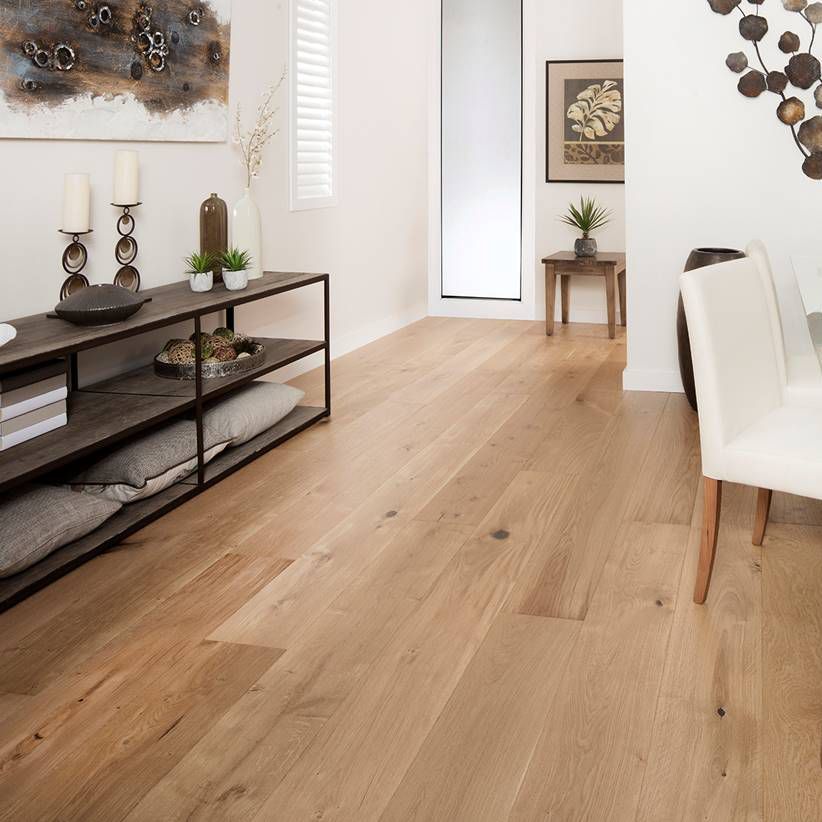
Why opt for engineered oak floorboards
Firstly, we should review why you should be considering engineered oak for your flooring. For me this is obvious as I absolutely love timber floors. I feel that they introduce a softness and a natural element to interiors. All colour schemes benefit from an accent of timber and introducing this as a foundation item in your home is the first step to creating a welcoming environment.
The appeal for me of oak engineered flooring over traditional hardwood is that you get a high grade European oak floor that looks stunning, but with the durability of a cross glued multi-plywood sub layer to provide high rigidity and structural strength.
This strong sub layer also ensures that the flooring is more resistant to moisture effects than a traditional hardwood floor. Engineered flooring is often more affordable too as more planks can be produced from hardwood sources, which is also positive for our environment.
My tips for selecting engineered oak floorboards
There are a myriad of choices in the marketplace for engineered wood flooring, which many refer to as a floating floor or floating floorboards. As with anything that you can buy for your home, there will be cheap and cheerful options or higher grade quality ones which will endure the test of time. I have the following tips to help you to select the right engineered flooring for your home.
Size of the floorboards
Whenever I am selecting these for clients, the first thing that I look at is the length and the width of the board before I even look at colours. It's so easy to see a sample of a floorboard and fall in love with it. It may be just the right tone of oak that you have been searching for, or contain the natural grains that appeal to you. What you must do is envisage how this will look over the entire floor. If the individual boards are not long enough, the overall finished effect is one that is messy and quite frankly unappealing. Look out for boards that are around 1.9m to 2.2m in length, as these will give you an overall streamlined and professional look.
The right width of the board is crucial too. If the boards are too narrow, again the overall finish will be too busy. By using a wide board, at least 190mm wide, the completed floor will look generous and streamlined.
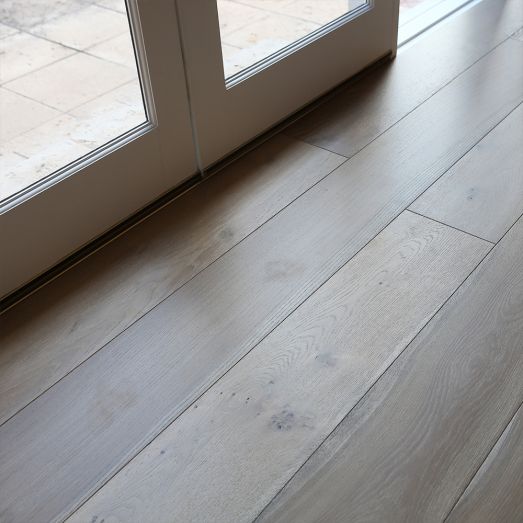
The grade of the oak
The highest grade European oak (also known as French Oak) is the choice to look for. This is a high density timber and offers superior strength. Many flooring companies will offer a range of levels of grade which refers to the look of the timber, rather than the structural integrity or its durability. You need to consider whether you will be happy to see lots of knots, streaks and variation in your floor or whether you would prefer one with fewer character marks. My clients always fall into two camps. They either love lots of rustic character or they want the boards to contain as few knots and variations as possible.
There is no right or wrong with this. You just need to consider the style of your home. Is it ultra contemporary or a more relaxed beach or country style home?
Always put together a mood board when you are embarking on a renovation or decorating project. Amass all of your samples and inspiration images and then see how your choice of floorboards fits into this.
Check the finish of the floorboards
The appeal of engineered wood flooring is that it is pre-sanded and sealed. My preference is an understated satin or matt finish and the floorboards MUST contain UV protection. In our Australian climate with sun streaming in through our windows, it is paramount that timber floorboards have protection from the sun.
The thickness of each floorboard
Some engineered wood flooring is very thin and will not give you the long-term durability that you should be looking for. Boards that are 150mm thick or up to 200mm will be structurally more sound with a generous layer of oak veneer, than its cheaper counterparts.
How to choose the right colour to suit your style
A colour scheme is easier to put together if you begin from the floor upwards. I don't recommend changing the style of flooring throughout the house unless there is a specific reason. Ideally you should install your choice of flooring throughout hallways, living/dining and kitchen areas and then only switch to carpet for bedrooms and/or separate living areas. Often people now continue their hard flooring throughout the entire house and rely on rugs to add under foot comfort or to zone a space.
I certainly feel that you should keep a colour flow throughout your home. This means that you should decide upon a neutral that you like and continue this in all areas, adding personality with style and colour to individual rooms. This way you have a cohesive home that flows well, but with personal touches and injections of colour to suit each space.
I have the following tips about flooring colour:
- Dark floors define the edges of a space and can make a room feel slightly smaller.
- Light floors give an airy feel and as the edges are not so clearly delineated, the space will feel larger.
- All timber will have an underlying colour. It could be a warm fawn hue or a soft green undertone. Dark floors may have a warm chocolate base or a cooler grey tone.
- Consider whether you prefer a darker, moodier palette for your home or a fresher, light and airy colour scheme. Collect inspiration from magazines and take note of your natural preferences.
- Do you like a more traditional British Colonial feel with dark timbers and a strong contrast with white. Or, do you prefer a relaxed, laid back Coastal style? Do you favour the very light colour palettes of a Scandi style or the darker tones associated with inner city urban living? Consider these questions and build up a look that you are happy with.
- Once you have decided whether you prefer a darker or lighter palette, start with the flooring that you love and then build on the colour scheme from there.
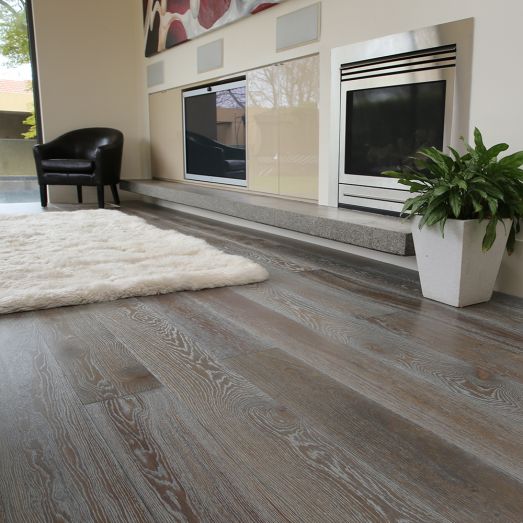
With the myriad of finishes available for oak engineered flooring, it is not always as straight forward as selecting a light or a dark floor. The beauty with the range of finishes though is that you can choose to have a dark palette but with boards that are limed which produces a gorgeous white through the timber grain. You will have a dark floor to suit your scheme but one that is not too heavy and dull.

A white smoked oak engineered timber floor brings a softer and laid back rustic feel to a space. This treatment works perfectly with timber that has lots of character.
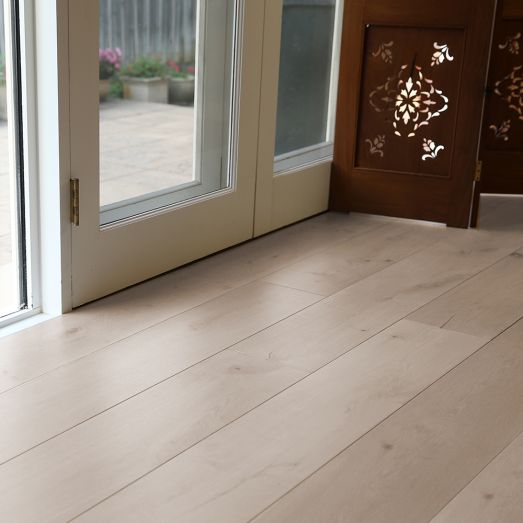
If you love a Scandi look then a blanched, washed out pale grey is perfect. Simple flooring that does not show much character is absolutely right for this look.
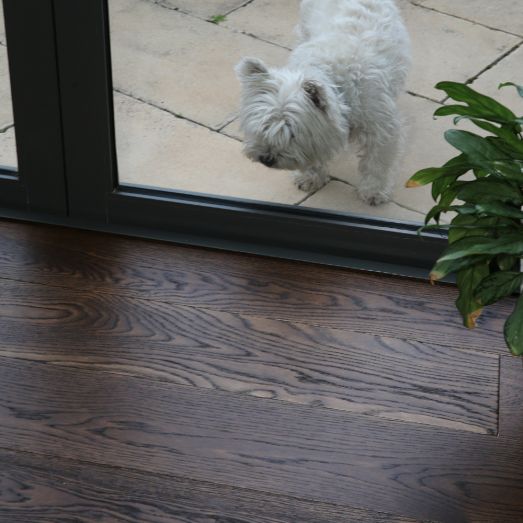
I love this raw umber finish with chestnut tones as it complements the black windows perfectly. This is a much darker look that would suit a Tropical or British Colonial style with lots of lovely character in the boards.
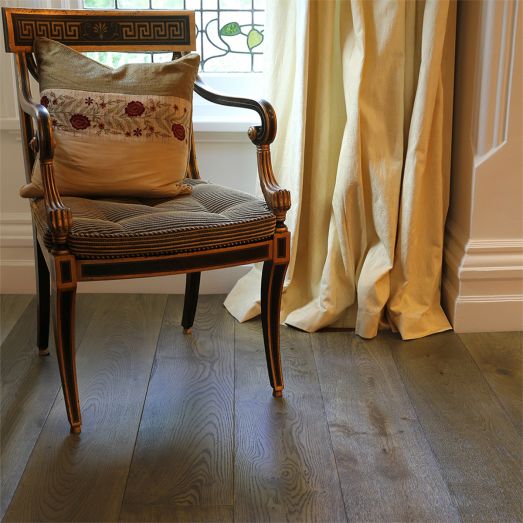
If you prefer a French Provincial style, then an elegant French Grey oak floor is an absolutely classic choice.
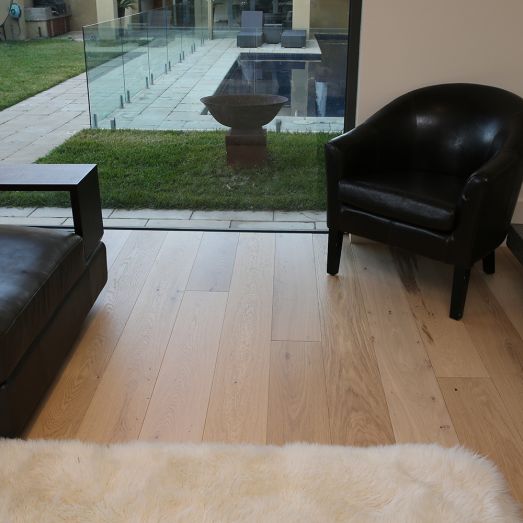
To achieve a light and airy laid back Aussie look, a simple fawn coloured oak floor would be my choice.
Flooring installation
Laying engineered flooring is relatively straight forward. Usually floorboards can be installed as a floating floor over suitable underlay, or installed using the direct stick (glued down) method. Look out for flooring that is laid with the tongue and groove system. Always follow the manufacture's installation guides. The key to success is good preparation as the floor needs to be completely level.
A seamless look for your home can be achieved by laying the same engineered flooring on stairs with stair nosing to match. If this is something that you need, ensure you do your homework as not all companies will supply this.
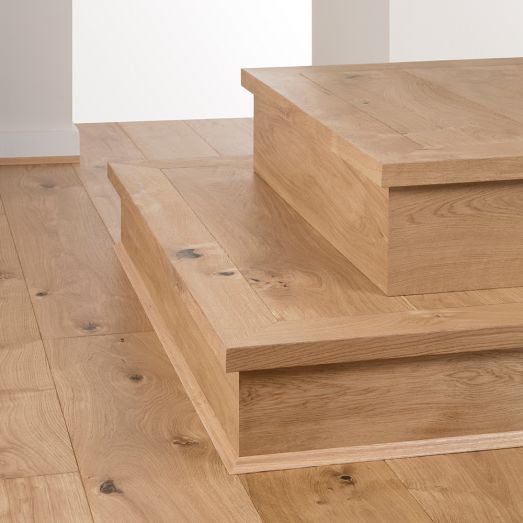
The images in this post have been supplied by Moku floorboards. They are protected by GrandOak's comprehensive warranty that provides 20 years protection on surface wear under normal use and a lifetime structural protection for structural defects such as delamination, cracking, warping or twisting, including any structural deformations at the time of supply. Installation instructions must be adhered to and terms, conditions, and exclusions apply. See the full floorboard warranty here.
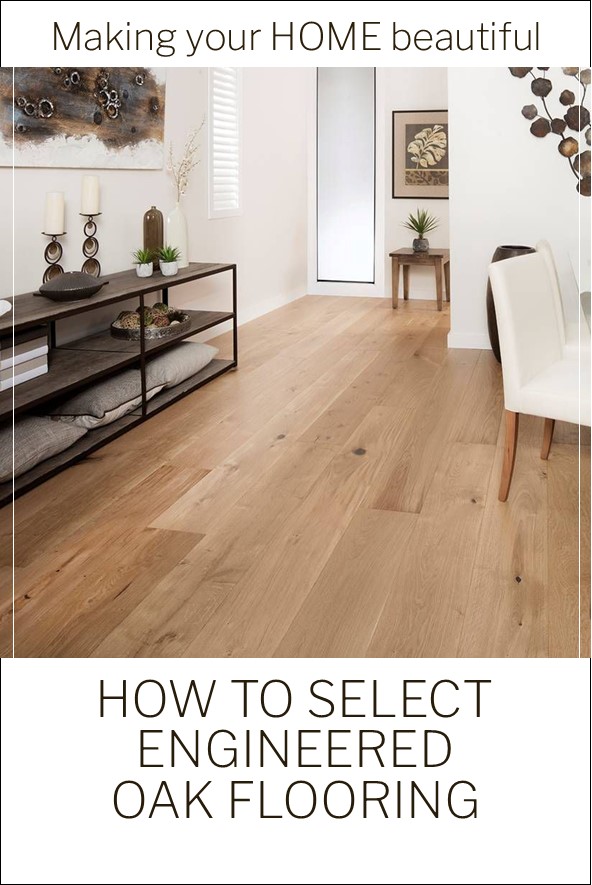
If you love the idea of timber floors with rugs to zone different areas, you should read How to select the right rug
I have complete guides on many different styles of decorating which may help you to define the look that is right for your home. The following styles rely on timber flooring to get the look right:
My Guide to French Provincial Style
British Colonial Style – 7 steps to achieve this look
5 key elements of Scandi Style
Parisian Decorating Style – 7 steps to achieve this look
If you are renovating or building a new dream home then you should sign up to my Free Resource Library that has lots of free e-books and checklists to help you.
Please note that this is a sponsored post but that all opinions and recommendations are my own.
